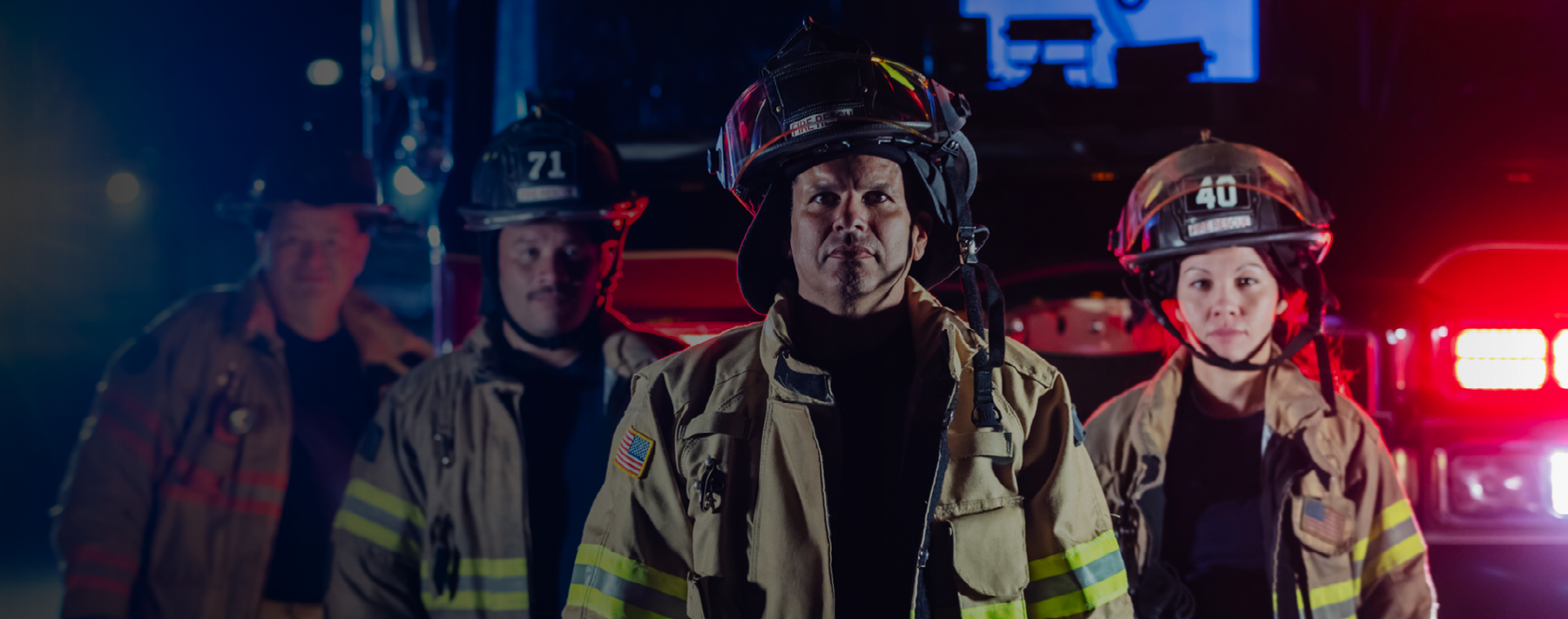To maintain personal and public safety, it is essential that first responders be fit for duty. Consequently, developing and maintaining physical fitness is of significant interest to first responders. However, while the importance of fitness is well understood, physical fitness testing for first responders is an area of considerable debate. Questions regarding test selection, administration and interpretation of test results are just a few of the areas that create both confusion and frustration and often lead to litigation. The purpose of this article is to advocate for public safety departments and agencies to have some type of regularly recurring physical fitness testing in place and to determine what type of physical fitness testing is right for them.
Start With Why
The old adage, “What gets measured gets done,” is certainly appropriate when speaking about testing among first responders. As previously stated, most first responders understand the need for fitness in their occupations. Consequently, many agencies will have a physical fitness test because they know they should, but at the end of the day, they may not understand exactly why they are doing it.
According to bestselling author Simon Sinek, to understand your purpose you must “Start with Why.” Why are you testing your personnel for physical fitness? What is the purpose? One of the major benefits of testing is to help identify areas of strength and weakness from a physical standpoint to help ensure fitness for duty. A second benefit is to support first responder health and wellness. Consequently, test selection and administration should be based on your agency or department’s specific needs, which includes the main purpose of your wellness program.
In a previous Cordico post on strength training and conditioning for first responders, we discussed the importance of building a foundation of health and fitness to support occupational performance. We broke the topic down to three elements: developing general health, building fitness and improving performance. Similarly, fitness testing for first responders can be broken down into three main areas: health, fitness, and occupational performance. The area you put the most emphasis on depends primarily on your agency or department’s values.
Health
Health is defined as a reduced risk of developing sickness and disease that may result in premature death. The sad reality is that many first responders are not healthy human beings. Many possess multiple comorbidities (e.g., obesity, hypertension, hypercholesterolemia, etc.) that may not just hinder job performance but could also lead to decreased lifespan and a lower overall quality of life. First responders who are in poor health also contribute to such other challenges as absenteeism, higher healthcare costs and an increased burden on their colleagues, which can lead to physical and emotional burnout. Consequently, testing centered on general health is typically aimed at providing information on areas in need of improvement from a standpoint of reducing the risk of sickness, disease and injury.
It is important to note that the main purpose of this testing should be to inform and not penalize, as this would be considered discrimination and make an agency vulnerable to litigation. However, health risk assessments can be a valuable tool for helping first responders identify areas in need of improvement for reducing the risk of developing comorbidities. Once individuals are aware of what they need to work on, they may take better control of their health.
The following are examples of tests that can be performed relatively easy and provide valuable health information for first responders:
- Health risk assessment
- Waist-to-hip ratio measurement
- Functional movement screening
- Blood pressure testing
- Resting heart rate testing
Due to the sensitive nature of these measures, it is recommended that agencies maintain the confidentiality of these results. In many cases, these measurements could be performed as self-assessments, or under the direction of an outside third party to help reduce reluctance to participate and reduce risk of HIPAA violations. This type of testing also provides a good opportunity for agencies to work with university partners to provide learning opportunities for students in areas such as medical and exercise science to gain valuable experience in the field and may be able to be provided at a lower cost compared to other vendors.
Physical Fitness
Physical fitness is the body’s ability to perform daily activities with strength and efficiency. When we test physical fitness, we’re not merely looking at the absence of disease, but also examining a person’s ability to perform specific tasks on the job and in life without undue fatigue or risk of injury. This area relates more to fulfilling your physical potential. Physical fitness should be thought of as another tool that can be used to improve occupational performance.
For example, if a law enforcement officer is physically fit, they may be able to use this tool in situations that require physical restraint of a non-compliant individual. If they do not possess the physical fitness to go hands-on, they may have to resort to other tools (such as batons, pepper spray, TASER devices and sidearms) to resolve a situation.
Many of the tests related to physical fitness are commonplace in agencies, such as pushups, sit-ups, and measures of aerobic fitness such as 1.5-mile runs or beep tests. Previous research indicates agencies that have some type of annual physical fitness program help reduce the declines in fitness experienced by personnel over their occupational life span. This is important for maintaining occupational performance across an entire career, as well as enjoying a rewarding retirement.
While the importance of fitness is well understood, physical fitness testing for first responders is an area of considerable debate.
The use of physical fitness testing for first responders has been controversial, mostly when the testing is tied to hiring and retention standards. When using these tests for this purpose it is essential that an agency go through a validation process to help protect themselves from accusations of setting arbitrary, unfair or discriminatory standards. That is, they should use the same standard for people in the same job, regardless of age, sex, and so on. Typically, agencies get into legal challenges when a random test is selected and minimum cut scores are imposed without showing an explicit relationship to job performance. Admittedly, it is very difficult to argue how performing 29 versus 30 push-ups could directly impact a person’s job performance. Consequently, many agencies have recently shied away from fitness testing based on concerns of litigation.
However, if fitness testing is used to guide physical improvements and not for hiring and retention decisions, it can be a powerful motivator for some individuals. In these cases, both age- and sex-related norms could be used to help first responders understand how they rank with other individuals like them. As long as they are non-punitive, such standards can also help identify areas in need of improvement. While it’s not practical to list every fitness test that could be performed, you can consult the article, “Use of Physical Fitness Assessments in Tactical Populations,” for a more comprehensive and detailed discussion on this topic.
Occupational Performance
Tests of occupational performance are typically used to determine if a certain job-related standard is being met and to determine fitness for duty. Popular examples of these tests include performing specific job tasks, such as a victim extraction/drag; they may even include a series of essential occupational tasks combined to form a Physical Ability Test (PAT). These tests tend to be more legally defensible as they measure an individual’s actual ability to perform the job. However, as previously mentioned, when used for hiring and retention purposes there is a need to go through some form of validation process to ensure the tests being utilized are reasonable, fair, and reflective of essential (though not necessarily frequently) performed occupational tasks.
As noted above, fear of litigation is one of the many reasons agencies choose not to employ these types of assessments. However, they can be incredibly valuable for setting aspirational goals, as well as identifying areas in need of further training. When used correctly, these tests can gauge personal physical performance for the purpose of identifying strengths and potential weaknesses. This is especially true when combined with fitness tests.
For example, if an officer is unable to perform well on a PAT, it’s difficult to know the reasons for the poor performance without assessing specific areas of fitness. In essence, both the officer and their supervisory command would be speculating as to whether this performance was based on mobility, muscular or cardiorespiratory fitness, body composition, or a combination of factors. Paring fitness testing with occupational tests can help develop profiles of individuals who tend to be more successful in occupational measures based on certain fitness attributes and may allow for the development of better training programs aimed at improving occupational performance.
In “Physical Fitness Characteristics of High vs. Low Performers on an Occupationally Specific Physical Agility Test for Patrol Officers,” my coauthors and I provide examples of how fitness data can be used to recommend areas to focus on to influence occupational performance. Note, the purpose of this article is not to suggest one test over another, but rather to have specific fitness tests in place that can measure different physical attributes such as muscular strength, cardiorespiratory fitness, flexibility, and so on. This can help first responders determine which areas they need to enhance occupational performance and gauge progress as they work to improve in these areas.
Data Use and Interpretation
One of the major complaints about fitness testing for first responders is that information is often collected but not acted on. Testing fitness without providing feedback to those being tested is a waste of time. The following are some ways to provide feedback to participants that can reduce noncompliance and other resistance related to fitness testing.
Identifying threats: General health assessments are excellent for helping identify immediate threats to health and well-being that may warrant a first responder seeking out medical attention. Again, these tests should not be used for hiring and retention, but instead as a way to maintain health and safety. This basic health information can help reduce the risk of premature sickness and death if acted upon in a timely manner.
Determining strengths and weaknesses: It’s human nature to play to our strengths and avoid our weaknesses. This can often be seen in training academies, where instructors are assigned based on their abilities and priorities. For instance, instructors who focus on their own muscular strength may emphasize strength training over aerobic conditioning. Those who have less body strength but good endurance may prefer cardio over strength training. It is important to realize all areas of fitness are important for a first responder, and too much focus on one area may create deficiency in others. First responders may need to be less like marathoners or power-lifters and more like decathletes — pretty good in all areas of fitness and not just exceptional in one. Determining strengths and weaknesses allows for deficiencies to be prioritized, while improving on or at least maintaining strengths.
Motivation: Percentile rankings allow individuals to see how they stack up to their peers or individuals similar to them. In “A physical fitness profile of state highway patrol officers by gender and age,” my coauthors and I show the efficacy of percentile rankings resulting from a series of fitness tests performed in one agency with a mandatory, non-punitive fitness battery. This kind of information can be provided to individual first responders, but should not necessarily be shared publicly. While it is completely acceptable to use age- and sex-related data to provide information about general fitness in your agency, this data should never be used for hiring and retention purposes as this is grounds for litigation. (If you’re not sure how to create percentile-ranking charts, check out this handy method using Microsoft Excel.)
Profiling: While setting specific cut-scores can be tricky, fitness may also be used to provide guidance related to academy completion rates. My coauthors and I highlighted this in “Physical Fitness Characteristics That Relate to Work Sample Test Battery Performance in Law Enforcement Recruits” and “The Influence of Physical Fitness on Reasons for Academy Separation in Law Enforcement Recruits.” Gathering fitness information based on completion rates from a specific academy may provide pre-hires valuable information about the fitness levels they should strive toward prior to entering the academy to help improve their opportunity for success.
In conclusion, fitness is essential for optimizing job performance and maintaining personal safety within first responder agencies and departments. While there is considerable debate surrounding which fitness tests are ideal for measuring first responder fitness, I suggest starting with your agency’s priorities and using that to pick the appropriate test(s). Fear of litigation often discourages agencies from performing fitness testing; however, this data is useful for much more than simply setting hiring and retentions standards. Consequently, at minimum, a mandatory, non-punitive annual fitness assessment is essential for improving the health, fitness and quality of life of first responders across the occupational life span and into retirement.



